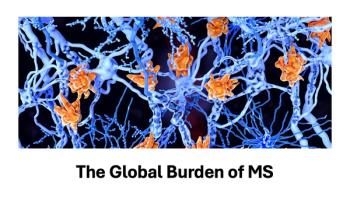
CMS bundled payments expand to cardiac care
CMS expands bundle payment programs by adding cardiac care. Here’s how you can contribute to providers’ success.
CMS and the Center for Medicare and Medicaid Innovation (CMMI)
Related:
Frank
"Along with the similar mandatory Comprehensive Joint Replacement (CJR) bundle roll out this year, this expansion of CMS bundle payments is a clear sign that CMS bundle payment programs will continue to grow,” says Jeffrey Frank MD, program director of quality and performance for the hospitalist practice line at CEP America
Andy McNerney, MBA, manager with GE Healthcare Camden Group, agrees. “The fact that this program was proposed under the umbrella of ‘episode payment model,’ instead of tagged as a cardiac specific bundle indicates that more bundle mandates are likely to follow,” McNerney says. “The more traction that bundles gain, whether through market forces or mandates, the more providers will be incentivized to invest in reporting and analytic capabilities that track patients almost real-time. This real-time focus on standardization, best practice, and utilization management will push managed care executives to evaluate the value they can offer: Can you build/expand services and analytic tools to help providers be successful?”
According to Frank, CMS has already demonstrated savings and improved clinical outcomes with the voluntary
“Nearly all of these participants are dyads as awardee-the provider or hospital-with conveners, companies who enable management of the care bundles,” Frank says. “A care bundle is the associated diagnoses via DRGs and the 60 or 90 days of all post-acute care. The awardees-convener dyads have upside opportunity if they can provide care at a cost lower than the CMS target price after the Medicare 2% discount off the top. This 2% is a multibillion dollar savings for CMS at a time healthcare costs continue to rise.”
Related:
Because post-acute care costs are up to 30% to 40% of total cost for these acute care diagnoses, post-acute care is an area of quality where readmissions and increased morbidity can be improved, and there is up to 50% variability in post-acute costs throughout the country, Frank says.
“But the real secret sauce to bundled payments is because physicians are encouraged to lead care innovations to improve outcomes via financial incentives as episode initiators-i.e., own the bundle as awardee-convener-or through revenue sharing agreements called gainsharing,” he says.
McNerney
An interesting component of this proposed mandate, according to McNerney is CMS’s financial incentives to increase cardiac rehab service utilization post-discharge for these conditions (AMI and CABG).
“It sounds like an old model of getting paid to do more, but in this case it’s increasing appropriate utilization and patient compliance to get patients on a healthy track and keep them from being readmitted,” he says.
Frank agrees. “These new bundles-AMI, CABG and SHFFT-are particularly interesting because these patients have more comorbidities than elective CJR patients,” he says.
“Since these patients have bigger risks, there will be more opportunity to improve post-acute care and thus better revenue,” Frank says. “However, the key to improving care is gainsharing to engage your physicians as well as your local post-acute care partners such as SNFs, home health and outpatient providers.
“CMS will continue to grow and promote bundle payment models as alternative payment models that improve patient outcomes while reducing CMS spend,” Frank continues. “Although there is increased risk to be accountable for the 90 days of post-acute care, there is significant upside potential if your organization can gain share with physicians to lead change and gain share with local post-acute care providers. Lastly, consider working with a convener who can help you with data, patient identification and care improvement processes.”
Also, although this proposed mandated bundle looks programmatically similar to CJR, the patient population is very different, according to McNerney.
“Cardiac patients have more comorbidities, require more unplanned services, and require more coordination, interventions, and engagement. What role can your organization play in helping providers and patients engage in their care? Without a patient engagement strategy and strong data and analytics tools, providers will be leaving their bundle success to chance,” he says.
Providers will be looking to secure-and possibly narrow-their post-acute network to only high quality providers that comply with defined clinical pathways, and willingly share performance metrics, McNerney says. “Make sure that your networks include these preferred post-acute partners because these partnerships may strengthen as more bundles are adopted. Perhaps reinventing yourself in a way that makes you more of a partner than an adversary to providers will help redefine your value proposition and differentiate you from competitors.”
Newsletter
Get the latest industry news, event updates, and more from Managed healthcare Executive.






















































